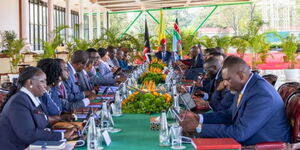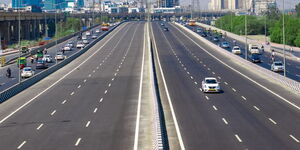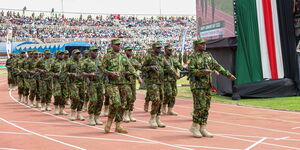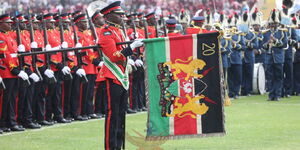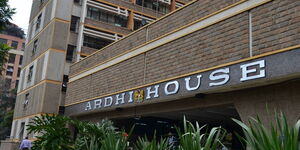Any person who has walked on the streets of Nairobi has definitely come across a three-storey iconic building near the University of Nairobi, painted in grey like old colour, called the Khoja Mosque.
Its actual name is Nairobi Town Jamatkhana, meaning a prayer house or mosque and is located at the junction of Nairobi's Moi Avenue and the start of the famous River Road.
The iconic religious building was built by the Ismaili community under the leadership of the Aga Khan. The foundation stone of the mosque was laid in January 1920 and completed in 1922, detailing the amount of work put in.
The growth of business around River Road and the entire area has been credited to the construction of this building hence the street opposite it gaining the name Bazaar Street, and later renamed Biashara Street.
The building also bears some historical meaning as it symbolises the permanent settlement of the Ismaili community in Nairobi.
The 49th Imam, Shah Karim al Hussaini, is said to have visited this Jamatkhana and recited congregational prayer when he was nine.
The mosque is also gazetted as one of Kenya’s historical sites and monuments.
Exterior and Interior Designs of the Building
The building stands out owing to the historical pieces of art that were put in place to make it stand out, having been in existence for a century now.
The exterior is made up of solid stone blocks that makes it appear like a huge majestic palace. It has a huge front entrance door and a clock on its dome.
The interior architecture consists of arcs on the ground floor and finished stone facing decorative motifs around the windows.
The inside walls and painters are painted white and terracotta respectively. Potted flowers give the interior a magnificent touch, beauty, and ambiance than what someone could see from the almost nondescript exterior.
The ground floor has a courtyard with wooden benches against the wall and beautiful flowers in the pots where those who have finished prayers can relax and socialise before leaving.
The building also has a clock tower echoing the British tradition. Still on the display case is an enclosed brown wooden cupboard showing celebration pictures of Aga Khan Sultan Mohamed Shah, grandfather to the current Aga Khan, and a few relics.
Near the display case there is a foundation stone plaque that shows significant historical information about the foundation and opening ceremony.
Despite being old, the building is fitted with an elevator and staircase on both sides separate for both men and women.
The first floor of the building has a display showing volunteers who served in the construction of the building from 1903 to 1996. It also features a prayer hall where men and women gather to pray. The prayer hall is divided in such a way that women and men have reserved spaces where they do not mix.
The second floor has a small prayer hall fitted with soundproof windows that block was specifically designed to block any form of noise pollution from the surrounding areas.
Most of the materials used in the construction of the building were imported from India with some being gathered locally.
The architectural work was done by Virjee Nanji, stone works by Mistris–Gulmohamed, Govind Arjaan, and Nathoo while carpentry work was executed by Mistri-Rood Singh.






